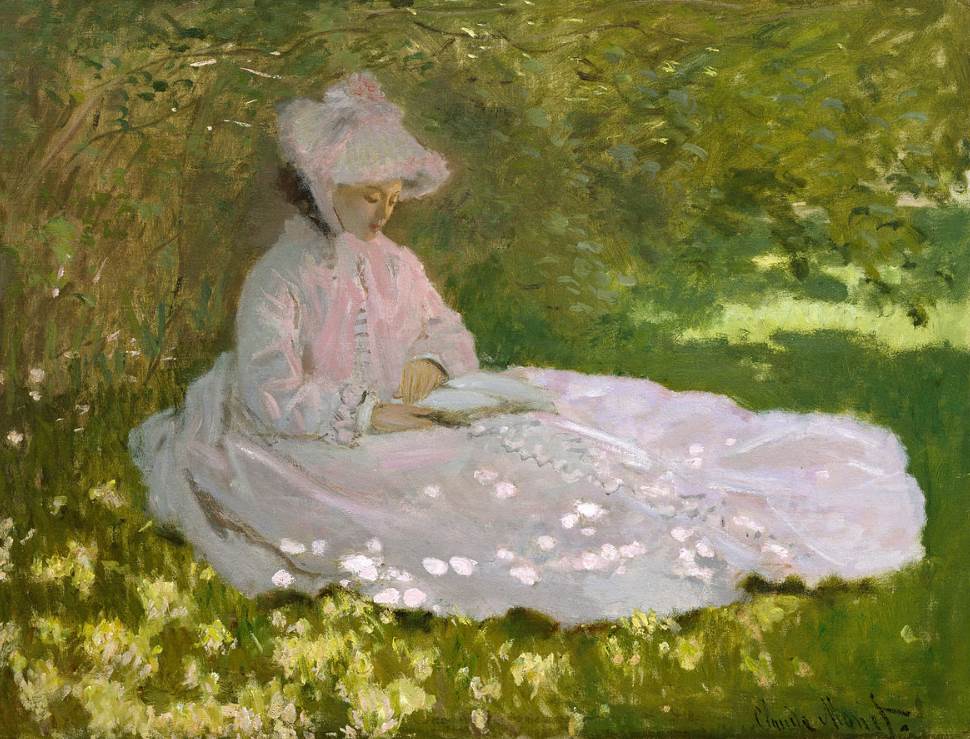When a father and son amassed a great collection of fine art in the late 19th and early 20th centuries, the son decided to construct a building to house it.
That’s the story of the Walters Art Museum in Baltimore in a nutshell. Father William Thompson Walters (1819–1894) moved to France in the early 1860s and started collecting art.
His son Henry Walters (1848–1931) continued to grow the collection and finally decided to transform the collection into a public art gallery similar to the Baltimore Museum of Art.
Henry constructed a Renaissance-style building between 1905 and 1909 to house the collection. This building along with several additions houses the museum today and is located near the Washington Monument in the Mount Vernon-Belvedere neighborhood.
He bequeathed the entire collection of over 22,000 objects along with the building to the City of Baltimore, and the museum first opened its doors in its current form in the year 1934.
In this article, you’ll discover some of the most famous paintings at the Walters Art Museum.
1. Madonna of the Candelabra – Raphael
- Date created: 1513-1514
- Dimensions: 65.7 × 64 centimeters (25.9 × 25 inches)
Madonna of the Candelabra is a painting by Raphael, the famous Renaissance painter who produced dozens of Madonna paintings during his career. This painting was completed around 1514, a period in history when the Italian artist lived in Rome, known as the High Renaissance.
Raffaello Sanzio da Urbino (1483-1520) was already a superstar, something that made his early passing a tragedy in the early 16th century. Art historians agree that the two accompanying angels were painted by his assistants. It’s a remarkable painting at the Walters Art Museum because it was the first Raphael painting to enter a collection in the United States.
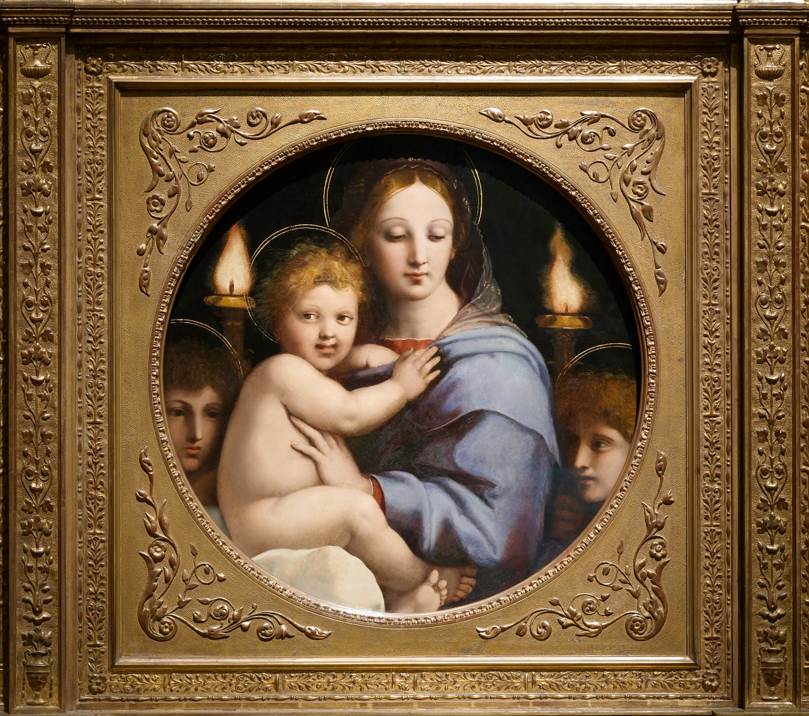
2. The Waterseller of Seville – Diego Velázquez
- Date created: 1620
- Dimensions: 104 × 75 centimeters (41 × 30 inches)
The Waterseller of Seville is the name of three paintings by Diego Velázquez (1599-1660), the Spanish artist who spent most of his career as the court painter of King Charles IV of Spain. These paintings were completed while he was still living in his native Seville, shortly before departing for Madrid.
The three works all depict the same subject matter but with slight differences. The paintings at the Apsley House in London and the Uffizi Gallery in Florence are distinctively brighter than the painting in the collection of the Walters Art Museum in Baltimore. The bystander in the background is just about invisible in this work as well.
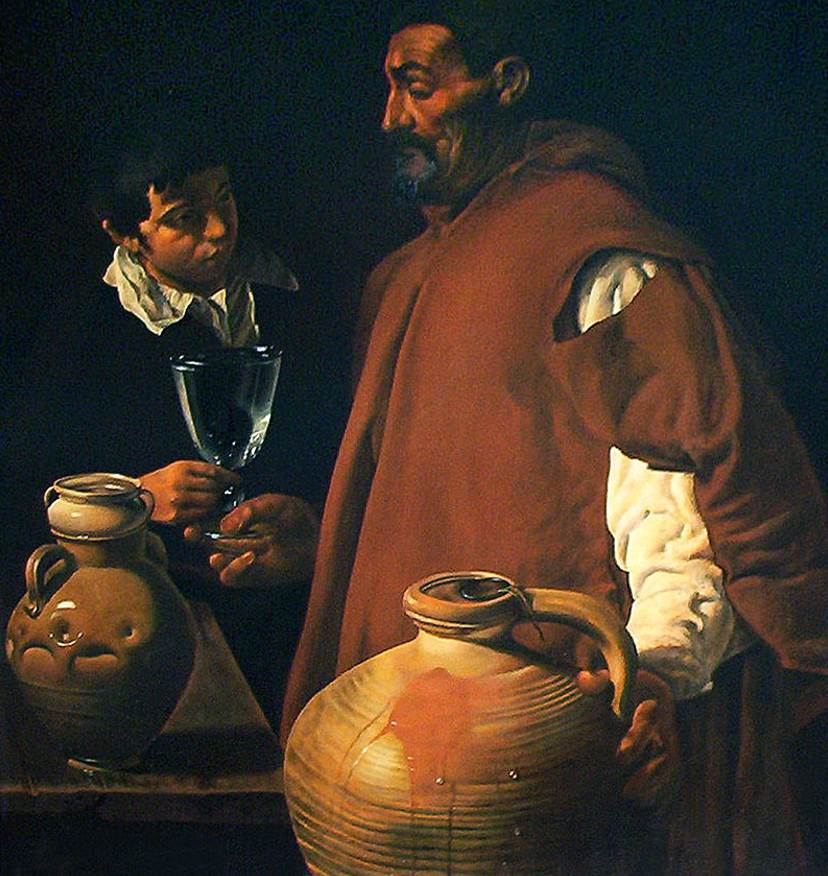
3. The Archdukes Albert and Isabella Visiting a Collector’s Cabinet – Jan Brueghel the Elder
- Date created: 1621-1623
- Dimensions: 94 × 123.3 centimeters (37 × 48.5 inches)
The Archdukes Albert and Isabella Visiting a Collector’s Cabinet is a magnificent painting by Jan Brueghel the Elder (1568-1625). The Flemish artist collaborated with his colleague Hieronymus Francken II (1578-1623) to complete this work in the early 1620s.
Archdukes Albert and Isabella were joint rulers of the Spanish Netherlands at the time and avid art collectors. In this painting, they are depicted visiting a contemporary art gallery. This type of painting was particularly popular at the time as it allowed artists to showcase their previous works.
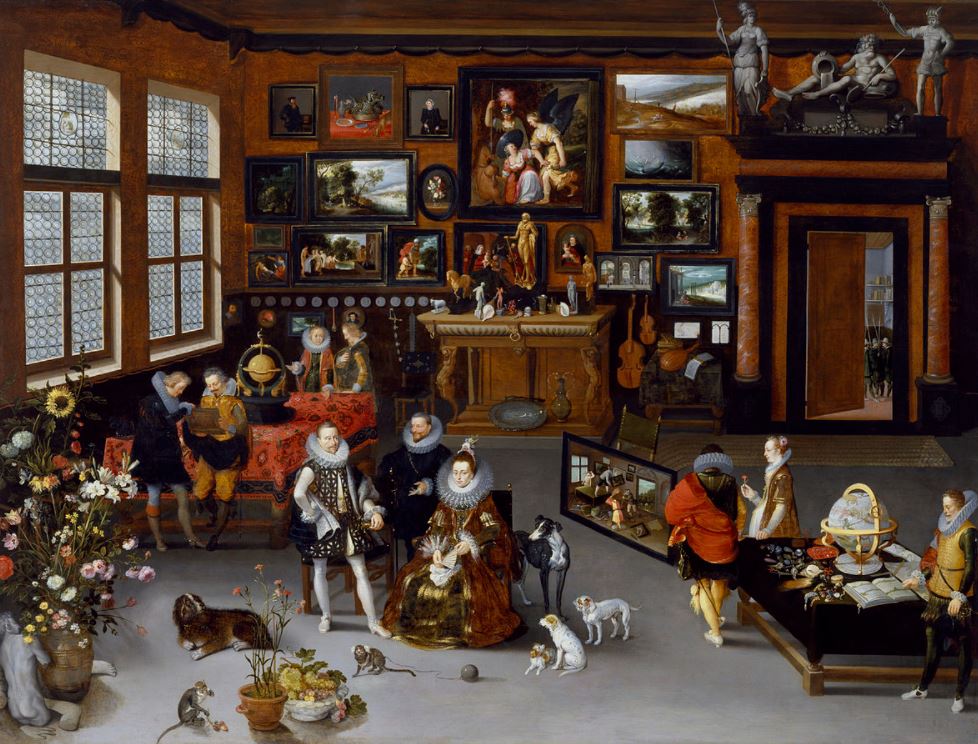
4. Scipio Africanus Freeing Massiva – Giovanni Battista Tiepolo
- Date created: 1719-1721
- Dimensions: 279.4 × 487.6 centimeters (110 × 192 inches)
Scipio Africanus Freeing Massiva is a monumental painting by Giovanni Battista Tiepolo (1696-1770), an Italian Rococo artist from Venice who was one of the leading 18th-century Venetian painters. The dramatic style of his works is reminiscent of the famous Baroque artists of the 17th century.
This painting depicts the Roman general Scipio Africanus shortly after the Battle of Baecula in modern-day Spain. He just defeated the Carthaginians and when some Africans are brought before him, he recognizes Massiva. He sends him home and therefore gains the trust of the Massinissa people.
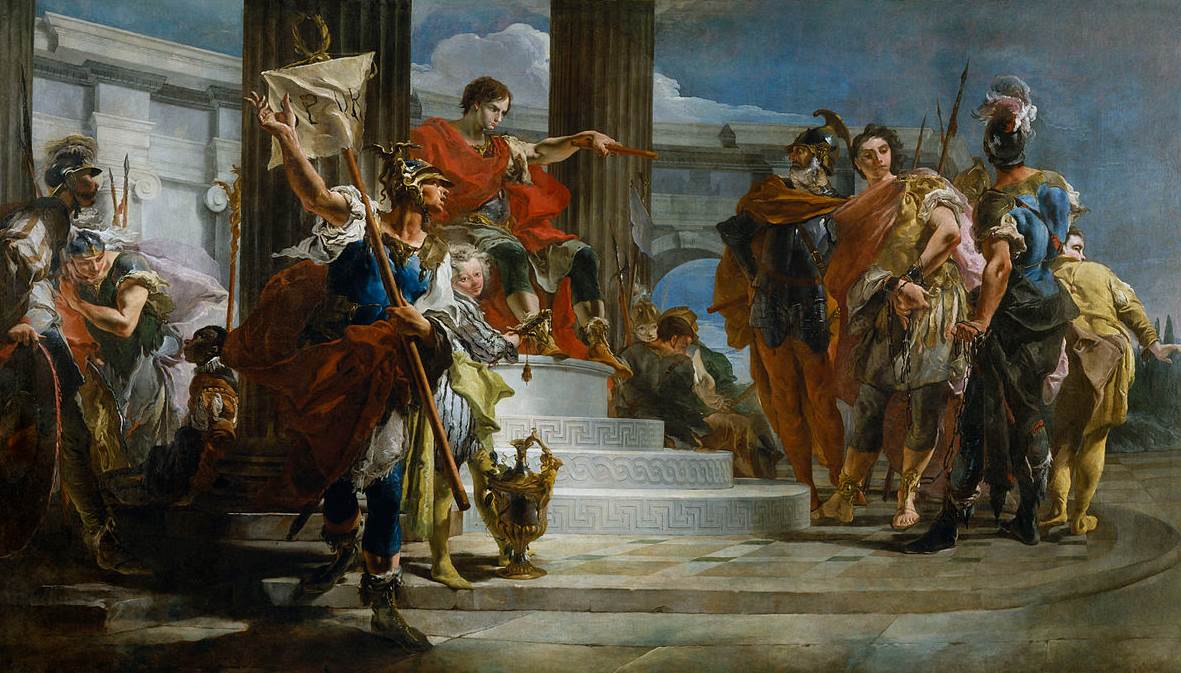
5. The Death of Caesar – Jean-Léon Gérôme
- Date created: 1867
- Dimensions: 85.5 × 145.5 centimeters (33.7 × 57.3 inches)
The Death of Caesar is a painting by Jean-Léon Gérôme (1824-1904) that depicts one of the most important moments in human history, the assassination of Julius Caesar. Gérôme was a French artist and academic painter who painted several important historical and mythological works.
We don’t see the actual assassination in this painting but the moment shortly afterward. The event happened at the Theatre of Pompey in 44 B.C., the first permanent theater of its kind in ancient Rome. We see the conspirators walking away and raising their knives in celebration of completing their plan.

6. The Café-Concert – Édouard Manet
- Date created: 1879
- Dimensions: 47.3 × 39.1 centimeters (18.6 × 15.4 inches)
The Café-Concert is a painting by Édouard Manet (1832-1883), the French artist who played a pivotal role in the transition from Realism to Impressionism in the 19th century. It’s one of many paintings in the artist’s oeuvre that depicts social life in a Parisian café.
The location of the café has been identified as the Brasserie Reichshoffen on the Boulevard Marguerite-de-Rochechouart in Paris. This is near the foot of Montmartre Hill, the elevated art district in the northern part of the city. Manet claimed that he depicted these scenes as they really were but in the style used by Impressionist artists.
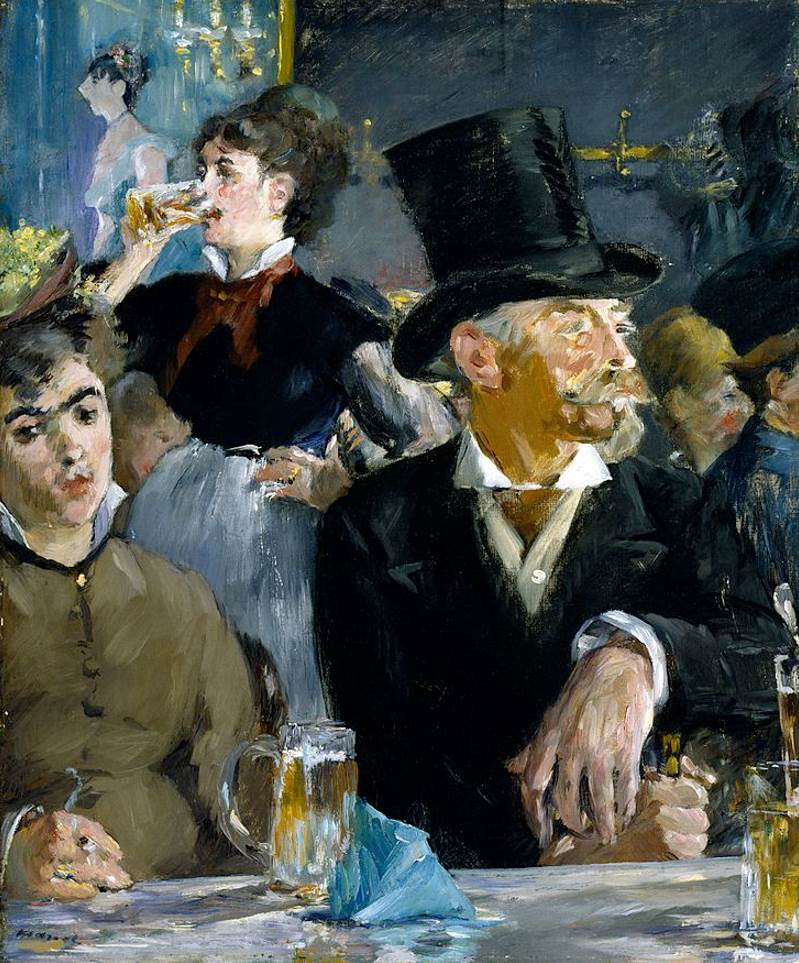
7. The Terrace at Saint-Germain, Spring – Alfred Sisley
- Date created: 1875
- Dimensions: 73.6 × 99.6 centimeters (29 × 39.2 inches)
The Terrace at Saint-Germain, Spring is a painting by Alfred Sisley (1839-1899), an English artist who lived and worked most of his life in France. Sisley produced Impressionist paintings and mainly focused on depicting landscapes, something that distinguished him from other Impressionist artists.
This painting was completed 3 years after he moved with his family to Louveciennes in 1872. It depicts the Seine Valley near the town of St.-Germain-en-Laye. The painting depicts the view from a 2.4-kilometer (1.5 miles) stone terrace that was constructed by André Le Nôtre between 1669 to 1673.

8. The Entombment – Giovanni di Paolo
- Date created: 1426
- Dimensions: 40.4 x 43.8 centimeters (15.87 x 17.25 inches)
The Entombment is a painting by early-Renaissance artist Giovanni di Paolo. It was originally part of a larger painting that served as an altarpiece at the church of San Domenico in Siena. It’s a painting that was produced using tempera and gold leaf on panel.
The paintings depicted several stories from the Bible, including the Raising of Lazarus, the Way to Calvary, the Descent from the Cross, and finally, the Entombment. Giovanni di Paolo was still influenced by the Gothic artists of the Middle Ages, especially Byzanthine art.
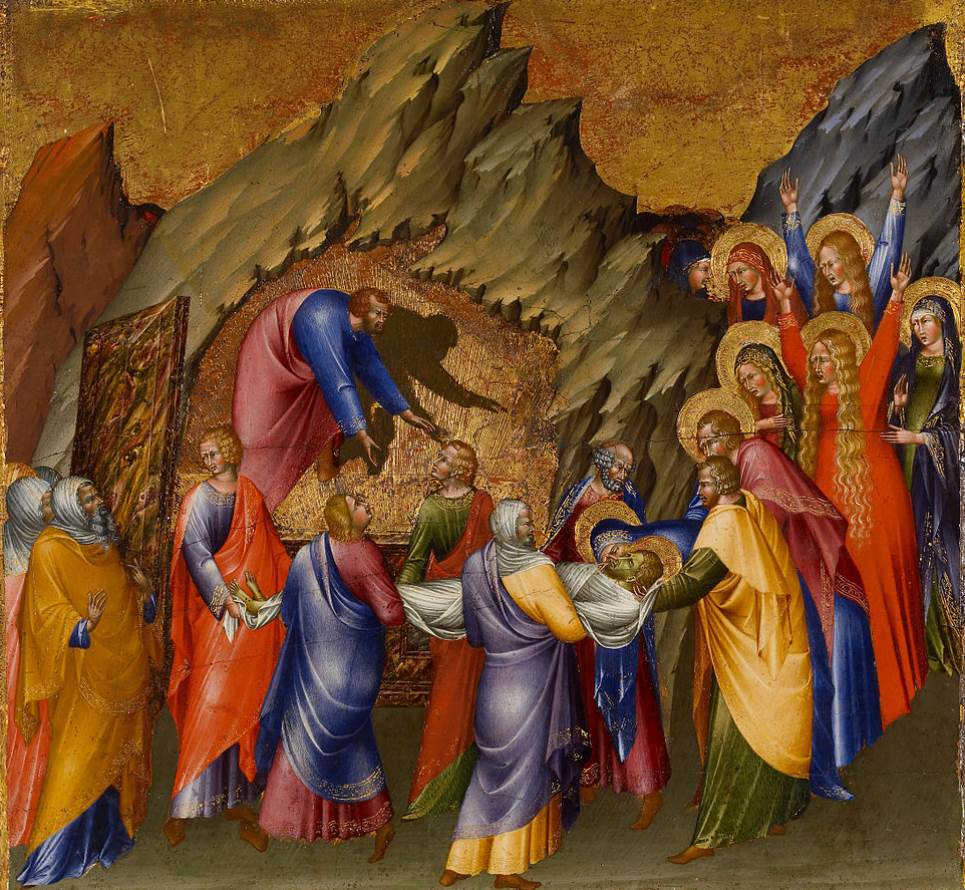
9. Odalisque with Slave – Jean-Auguste-Dominique Ingres
- Date created: 1839
- Dimensions: 72.1 × 100.3 centimeters (28.4 × 39.5 inches)
Odalisque with Slave is a painting by French Neoclassical artist Jean-Auguste-Dominique Ingres (1780-1867), a man who continued to protect the academic transitions of art in the early 19th century. The painting at the Walters Art Museum is the second version of the same subject by the artist.
The subject matter of the harem was something that Ingres enjoyed as he produced many paintings depicting so-called “Odalisques”, starting with his controversial “Grande Odalisque” in 1814. Unlike his rival Eugène Delacroix (1798-1863), Ingres never visited the Near East so he produced an imaginary scene.
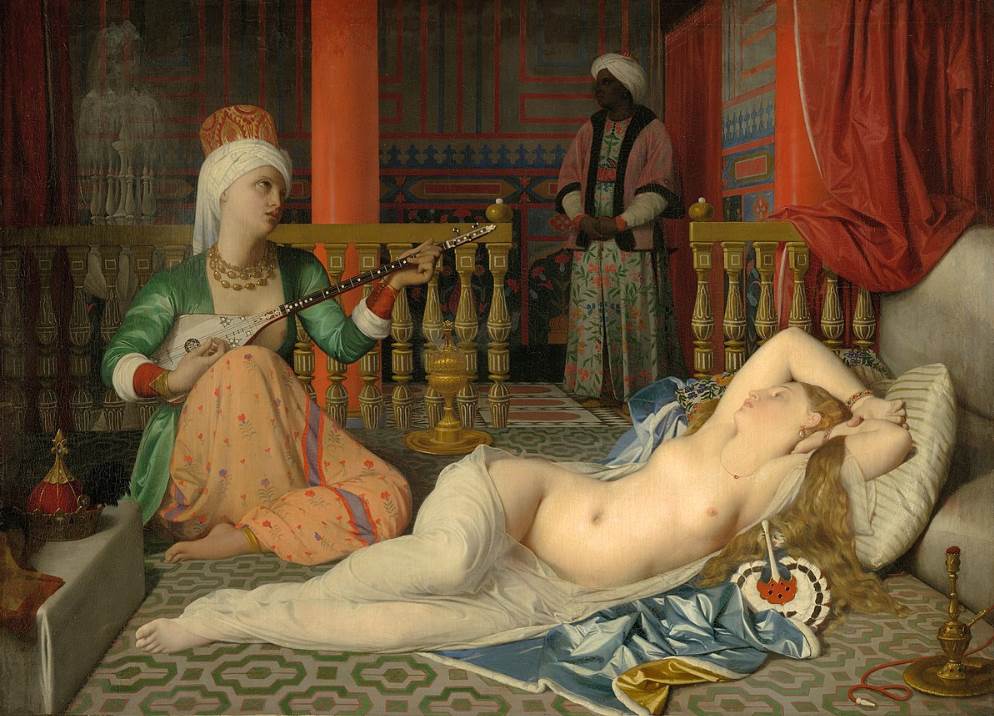
10. Springtime – Claude Monet
- Date created: 1872
- Dimensions: 50 × 65.5 centimeters (20 × 25.8 inches)
Springtime is the title of a painting also known as “The Reader.” It’s a painting by Claude Monet (1840-1926), the founding father of the Impressionist art movement. The painting was completed shortly after Monet and his family had moved to Argenteuil, a small village just northwest of Paris.
The painting depicts the artist’s first wife, Camille Doncieux (1847-1879), as she sits on the grass near a bed of lilac flowers. This location was popular among Impressionists as many artists visited Monet here. Alfred Sisley and his girlfriend Adélaïde-Eugénie Lescouezec also served as models in this location.
